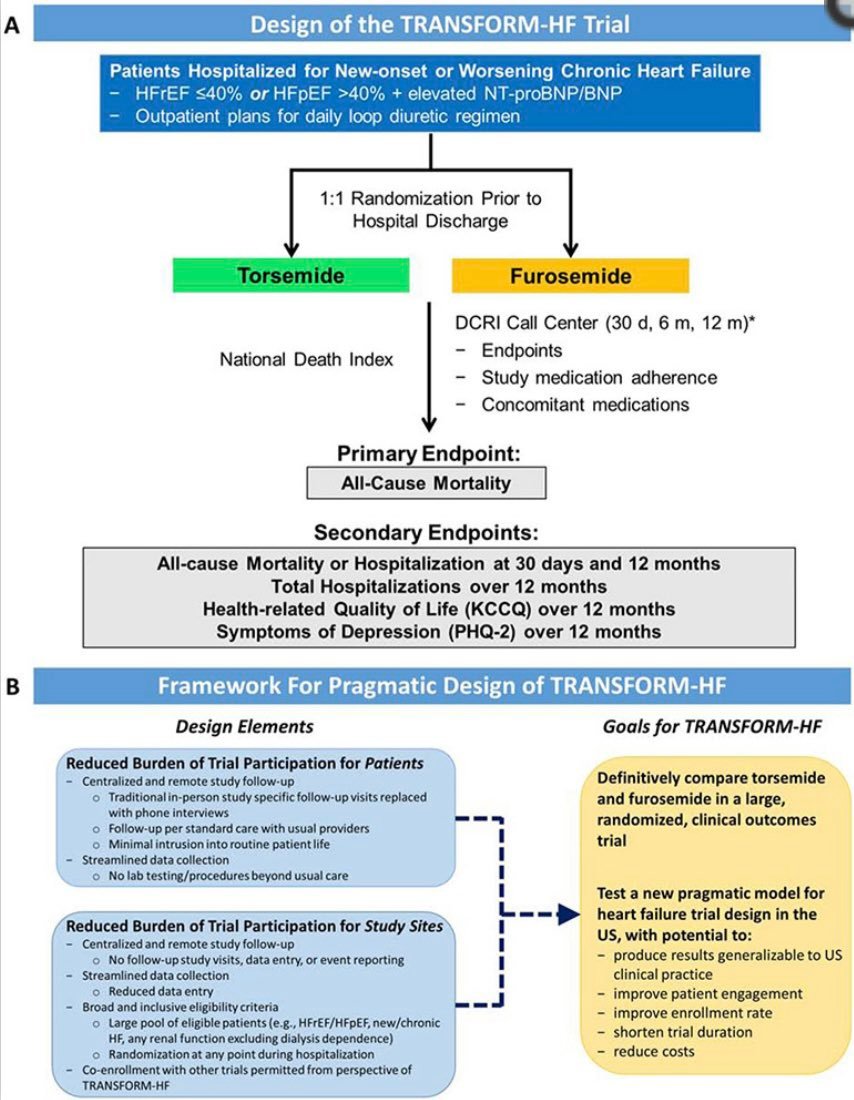
Breaking News @AHAScience with #TRANSFORMHF - the largest (N=2859) ambulatory #heartfailure diuretic trial to determine if torsemide would be superior to furosemide to ⬇️ reduce all-cause mortality - what a huge accomplishment of @robmentz et al!!! (1/9)
sciencedirect.com/science/articl…
sciencedirect.com/science/articl…

At first sight 'no need to transform your practice' as both are similarly effective for mortality (2/9) 

But @robmentz et al should be congratulated for conducting this very important RCT designed to answer an important clinically very relevant question. The pragmatic design allowed to recruit a large diverse patient population (>1/3 women, >1/3 black adults, HFpEF and HFrEF) (4/9) 

Unfortunately, the pragmatic design did not allow to collect data on the prevalence of decongestion which is important as NTproBNP levels were almost 4000 pg/ml at inclusion. More insights on diuretic dosing or other GDMT might have led to a different result. (5/9)
Loop diuretics are the only drug with a class I recommendation independent of LVEF to treat signs and symptoms of congestion but decisive evidence regarding diuretic agents, administration schedules, and routes of administration was limited. (6/9) 

#ADVOR clearly demonstrated that the addition of acetazolamide to loop diuretic therapy in patients with ADHF resulted in a greater incidence of successful decongestion. (7/9)
nejm.org/doi/10.1056/NE…
nejm.org/doi/10.1056/NE…

#CLOROTIC demonstrated that the addition of hydrocholorothiazide to loop diuretic therapy in patients with ADHF resulted in greater weight loss #HeartFailure2022 (8/9) 

So do you feel we need to update the guidelines on diuretic therapy in HF ????? (9/9)
@WilsonTangMD
@FH_Verbrugge
@petra_nijst
@PieterMartensMD
@JeroenDauw
@kevin_damman
@jozinetm
@AlexMebazaa
@MarcoMetra
@robmentz
@jc_trullas
@WilsonTangMD
@FH_Verbrugge
@petra_nijst
@PieterMartensMD
@JeroenDauw
@kevin_damman
@jozinetm
@AlexMebazaa
@MarcoMetra
@robmentz
@jc_trullas
• • •
Missing some Tweet in this thread? You can try to
force a refresh



















